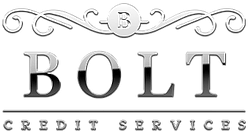When you are getting all your ducks in a row and preparing to buy a home, sudden hiccups that may come up can be stressful and scary. Some things that can STOP you from moving forward with your dream of home ownership are debilitating. The best thing for you to do is know what’s out there against you, if anything, and understand credit in general. Also learn what the lenders are looking for. That way you are prepared and don’t lose any deposits or money used on inspections or appraisals.
When it comes to buying a home, the lenders pull many reports besides a credit report. They can find any debts you have or have had against you even if they are not reporting on your credit report.
Some people think that if it is not on credit then it doesn’t exist….
Well yes it does! And, they will find it!
Here are some different reports that exist out there as well as some time frames on reporting:
CAIVRS Report – What is it?
CAIVRS stands for “Credit Alert Verification Reporting System.” It is where the lenders can find any previous foreclosures or Federal debt in collections like Student loans… It’s a federal database that keeps track of anyone who has defaulted on a loan, is currently delinquent on any debt that is owed to the federal government. Previous Mortgages or loans that have foreclosed. If you had a business and had any Labor Commission or Unemployment issues placed against you it will show in here also. It can affect your license if you have a public license for 3 years.
How do I know if I am on the list?
The CAIVRS database is one of the things that a lender will look at. If you are on there they will advise you when they get the report back. You can also contact HUD directly or if you have had a foreclosure under an FHA mortgage, you will for sure appear on the CAIVRS list for three years after HUD pays the insurance claim You usually have to wait 3-7 years to buy another house after a foreclosure, because of this. But, if HUD takes a long time to pay the lender on the claim, the clock will start counting down then, not when you gave the keys back or when it shows foreclosed on title.
What is LexisNexis?
LexisNexis is a Risk Solutions reporting system that is used by law enforcement, government agencies, banks and lenders. Much of the data held by LexisNexis has been collected from public record and publicly available data sources.
This is where your public records such as: Bankruptcies, Judgments & Tax liens are reported and found when you go apply for financing.
Do mortgage lenders use LexisNexis?
Some mortgage reports have recently started to pull LexisNexis now. Due to laws that changed in 2017 regarding the reporting of public records to credit reports, most of the judgments & tax liens do not show on personal credit reports. It is better to know if you have any judgments or liens when buying a home as they will be found by the title company when you buy a home.
Chexsystems, What is it?
ChexSystems what we call a “Credit Bureau for Banks”.. It is a check verification service and consumer credit reporting agency and It provides information about the use of deposit accounts by consumers. If you ever had or have a checking account that goes negative or a line of credit charge off, then you are put in this system. The system is Nationwide and if you go try and open a checking/savings account they will pull a Chexsystem on you.
This prevents people from opening bank accounts nationwide.
How long do you stay on ChexSystems?
5 years
Reported information usually stays in ChexSystems file for 5 years. Until then, you might be able to open a second-chance checking account. These accounts are designed for people with bad banking history.
Can you dispute Chexsystems?
Yes you can and it is done via Fax. They are very hard to get a hold of but they do provide results
Chexsystems doesn’t affect your home buying, only opening a bank account.
Statute of limitations on Credit Reporting:
The time frame that an item will stay and report on your credit report is different than the time frame the creditors can collection on a debt.
The length of time an item will stay on your report, whether its negative or positive, is 7.5 years from the date of last activity (payment). If it is a public record it is 10 years.
Statute of limitations on the collection of debts:
The statute of limitation on the collection of debt is how long a creditor has to take legal action against you to force you to pay a debt. The court system doesn’t keep track of the statute on your debt. Instead, it’s your responsibility to prove the debt has passed its statute of limitation. The statute of limitations starts once you go past due on the Original debt.
What Happens when Debts that are past the statute?
Debts that have reached or passed the statute of limitation are known as Time barred debts. It means that the creditor can’t get a judgment against you— if you do not ignore the summons, if you get sued. You would have to respond and go to court with proof that the debt is past the statute, as the courts do not track this, it is your responsibility to prove that it is past the statute. Ignoring a summons will get you a ‘Default Judgment”
Do not ignore summons or collection letters.
Types of Debt Categories:
Depending on the type of debt, determines the statute of limitations.. The time limits are different for each type.
Oral & Verbal Agreements:
These debts are based on an oral or verbal contract. This agreement is only verbal and nothing in writing.
Written Agreements & Contracts – Promissory Notes
If you sign an agreement or contract it falls in the category of a written contract. However, a written contract must include the terms and conditions of the loan or agreement. For example, the amount of the loan, the monthly payment and term. Promissory Notes are pretty much the same as a contract or written agreement, however, there are usually terms and timeframes along with interest rates to pay back.
A medical debt is one kind of a written contract.
Mortgages and student loans are two examples of promissory notes.
Open- Ended or Revolving Accounts
This is an account with a limit and revolving balance that you can repay and then borrow again. It does not close once it is paid off like a term loan or promissory note. Credit Cards, Store accounts, bank card lines of credit are all examples of open-ended accounts. It is not an open-ended account if it closes once you pay it off and you cannot use it again.
The Statute of Limitation of Each State:
Every state has its own statute of limitations on the collection of debt. This is the amount of time the court will force you to pay a debt. The statute of limitations varies depending on the type of debt listed above. Usually, it is between 3 to 6 years, but it can be as high as 15 years in certain states. Before you respond to any debt collection, find out the Statute of Limitations for your state- that you lived in when you applied for the debt.




